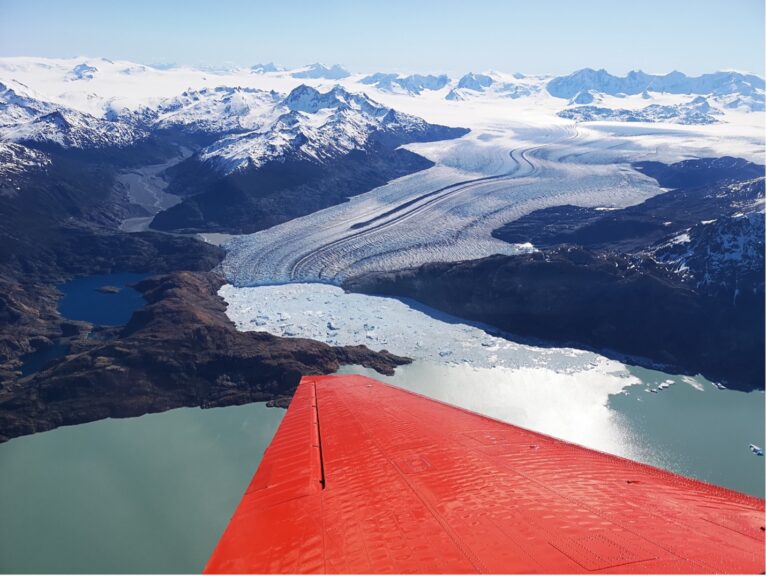Glaciers are melting rapidly – new ESA study demonstrates dramatic developments
The glaciers in the world’s high mountain regions are important freshwater reservoirs, providing resources for drinking water, irrigation and hydropower. However, as a result of climate change, they are melting dramatically and causing sea levels to rise. This has been confirmed by a new international study, in which three researchers from the Institute of Geography were involved and which has now been published in the scientific journal Nature.
The study shows that glaciers have lost an average of 273 billion tons of ice per year since 2000, with an alarming increase in the last ten years. Over the entire period, more than 6,500 billion tons of glacier ice have been lost. This corresponds to a global sea level rise of 18 millimeters in the last two decades. However, there are clear regional differences in the change in glaciated areas: the loss of ice mass in the European Alps compared to the year 2000 is around 39%, while glaciers on the Antarctic islands have only lost 2% of their original mass. Overall, however, the worldwide melting of glaciated areas is now the second largest cause of global sea level rise, surpassed only by the warming of the oceans.
For the “Glacier Mass Balance Intercomparison Exercise” (GlaMBIE) by the European Space Agency ESA, 35 teams consisting of around 450 scientists from all over the world combined observations from field measurements and various satellite missions to create time series of global ice mass changes from 2000 to 2023. As the investigations were carried out using different measurement methods, the new GlaMBIE study not only provides a more detailed description of global and regional glacier development over the last two decades, but also enables a direct comparison of different research approaches. Prof. Dr. Matthias Braun, Dr. Thorsten Seehaus and Dr. Christian Sommer from the Institute of Geography contributed data and analyses on glacier elevation changes based on measurements from the German TanDEM-X satellite mission in the Andes, the European Alps and the Arctic.
Their research was funded by the German Research Foundation (DFG) and the German Aerospace Center (DLR). Prof. Braun coordinates the IDP M³OCCA. Dr. Seehaus leads a DFG Emmy-Noether funded research group that aims to better assess glacier changes and their impacts in the tropical Andes.
https://doi.org/10.1038/s41586-024-08545-z

